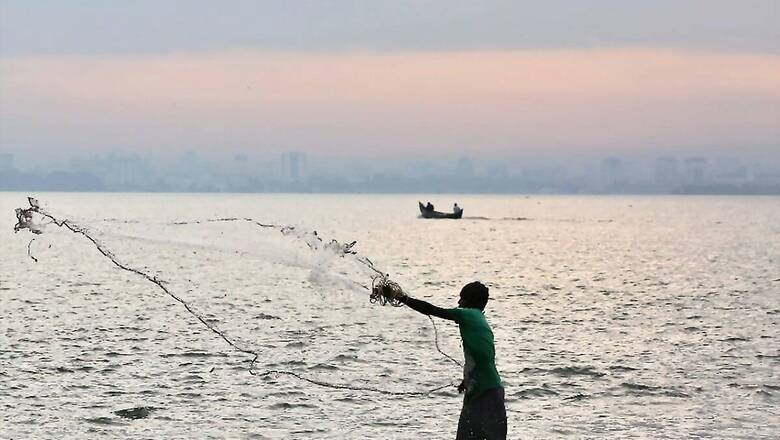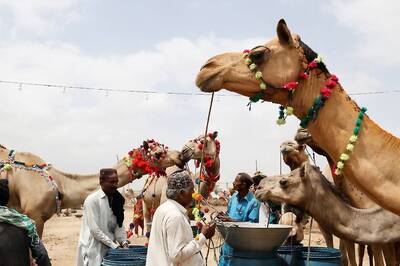
views
On May 27, India and the Philippines held their first-ever India-Philippines Virtual Business Conference on Marine Fisheries and Aquaculture (IPBC-MFA). The virtual business event was attended by representatives of India’s fishery industry, the Philippine Chamber of Agriculture and Fisheries Inc., and the Embassy of India in Manila.
Cooperation between India and the Philippines in the blue economy greatly taps on India’s Indo-Pacific Oceans Initiative (IPOI). In 2019, Prime Minister Narendra Modi proposed the establishment of an IPOI for a secure and stable maritime domain. The areas of focus of such an initiative heavily rests on creating partnerships amongst interested states in enhancing maritime security, sustainably using marine resources, and disaster prevention and management. The IPBC-MFA reflects the widening of India-Philippines cooperation beyond the traditional sphere of defence engagements to that of the blue economy.
Maximising the Tuna Industry
One of the major points of discussion during the IPBC-MFA cantered on the Philippines’ potential to invest in setting-up tuna processing facilities in India or importing its needed tuna raw materials from the South Asian country. According to Cherian Kurian, the Managing Director of India’s M/S HIC ABF Special Foods, India largely produces tuna ready for canning. In line with this, the Philippines’ global leadership in tuna processing and canning greatly complements India’s ability to produce such a resource.
Tuna serves as one of the Philippines’ largest seafood exports. The country’s tuna industry is worth approximately US $300 million to its export economy and employs roughly 120,000 workers. Furthermore, The Frabelle Fishing Corp. President, Francisco Tiu Laurel Jr, noted that tuna fishing in India is also a potential opportunity for local fish producers. Laurel stated that, “(The Philippine) Tuna fleet is willing to expand when they’re welcome to fish.”
However, Tuna Canners Association of the Philippines Executive Director Francisco Buencamino suggested that it may be more pragmatic to import India’s raw tuna production and process these locally. This is more advantageous given that the Philippines has preferential duty privileges to the European Union (EU) for tuna export. Moreover, Kurian noted that India’s oceanic tuna resource potential within its exclusive economic zone (EEZ) reaches around 2.13 million metric tons.
India and the Philippines can effectively cooperate as partners in cultivating the tuna industry. In theory, if India begins to export larger and bigger volumes of tuna to the Philippines, the latter may be able to bolster and enhance its processing-canning capabilities significantly. This will lead to a synchronous effort to expand cooperation in the blue ocean economy.
Cultivating the Seaweed Industry
During the business IPBC-MFA, Dr Munisamy Shanmugham M/s Aqua Agro Processing Manamaduria Vice-President, highlighted the importance of investing in seaweed in India. He stated that “There is huge demand for seaweed hydrocolloids in India, but currently 50-90 per cent is met through imports.” This statement comes at a time when the Indian Government has allotted a budget of INR 640 crore (US $88.34 million) to promote the seaweed industry and provide subsidy for its cultivation.
India just recently began to establish its processing facilities for producing carrageenan—a value-added processed form of seaweed. However, the Philippines has established itself as a global leader in carrageenan and seaweeds and had put up its processing facilities significantly earlier than other countries. In fact, the Philippines was the first country in the world to develop seaweed species Kappaphycus for commercial cultivation for carrageenan.
The Philippines continues to harness a huge area of seaweed farm for expansion. Alfredro Pedrosa III, Chair of the Seaweed Industry Association of the Philippines, said in the virtual conference that “These are the resources that sustain our industry. We have available farm area of 200,000 hectares along coastlines. Only 60,000 hectares are farmed. We have 500,000 hectares of deep-sea available farmable area.”
This opens up another significant opportunity for collaboration between India and the Philippines in the seaweed industry especially as domestic demand exceeds supply. Moreover, the Philippines’ strength in technology, experience, and research in the seaweed industry serves as an important foundation in solidifying the partnership of both countries.
Harnessing the Shrimp Industry
A third area for India-Philippines collaboration against the backdrop of the IPOI is the shrimp industry. India can extend its valuable expertise, technology, and research to the Philippines as the Southeast Asian country continues to be marred by the challenges brought by shrimp diseases. Additionally, it must be noted that India is the world’s largest exporter of shrimp in terms of value, with exports from January to October 2020 worth US $3.5 billion.
India’s shrimp farming area is around 160,000 hectares. One of the highest farmed shrimp production in a year was in 2019 reaching approximately 805,000 metric tons. However, it still has a massive potential area of 1.2 million hectares of brackish water, of which only 10 percent is being utilised. Accordingly, India’s capacity and know-how in the shrimp industry can be highly advantageous for the Philippines to enhance and maximise its shrimp industry’s capacity.
Future Trajectory of Multi-dimensional India-Philippines Relationship
The initiation of the IPBC-MFA serves as a ground-breaking moment in forging a closer and more dynamic Philippines-India relationship. Though the bilateral partnership of the two countries in the defence realm has significantly picked up since 2014, the commencement of such an event greatly showcased the willingness of both New Delhi and Manila to not only deepen their cooperation in existing fields, but to also broaden the scope of engagement and explore areas of untapped potential. The success of the virtual meeting will become a major stepping stone for more diverse engagements in the future, which will effectively cultivate a more robust and multi-dimensional bilateral partnership between India and the Philippines.
This article was first published on ORF.
Read all the Latest News, Breaking News and Coronavirus News here.



















Comments
0 comment